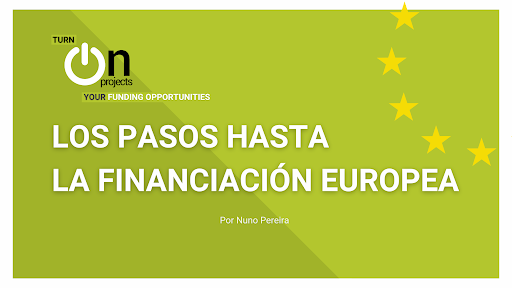
European funds are an excellent opportunity for those entities that want their ideas to become true projects.
With more than one billion euros budget for 2021-2027 period, both the Multiannual Financial Framework (MFF) and the Next Generation EU extraordinary funds, offer funding for projects in every possible area. If you have any project ideas, at OnProjects S.L. we will support you throughout the funding process, starting with the drafting of the proposal and partners search, to a comprehensive management of the project, communication and dissemination of the project results. We work professionally and seriously, aligning our strategies with the key pillars for European financing: a smarter, greener and carbon-free Europe, more social and closer to its citizens. Here we present the necessary steps to get the European Funding for your project idea.
1. Obtaining the PIC
The Participant Identification Code (PIC) is an organization identification number, and obtaining it is the first mandatory step for all those who wish to apply for European Financing aid. It is obtained through the Funding & Tender opportunities platform of the European Commission.
To obtain the PIC number, you must be registered on the Funding & Tenders platform, the Participant Identification Code will be obtained once the data of your organization, included in the registration process, has been validated.
2. Search partners and calls
Projects financed with funds from the European Union mostly require the collaboration of organizations from different countries. The minimum number of participants varies according to each call, the consortium should comprise independent legal entities established in different member or associated countries.
In our trajectory of more than 15 years, at OnProjects we have generated a wide network of contacts throughout Europe that facilitates the search for partners for project collaborations. In addition, in the project proposal the participation of the partners must be duly justified, as well as the size of the consortium – the larger, the more difficult the management will be. We can ensure the inclusion of a consortium with added value and excellent management of it.
Likewise, another key factor in putting an idea into practice is finding the call that best suits the project in mind. Most of the funding for international projects comes from the European Commission and its calls are published in the Official Journal of the European Union. We can also find information about calls published on the website of each program (eg: Erasmus+, Horizon Europe, Creative Europe, Interreg).
Most of the time, there are many open calls, making this task long, complex, and sometimes inconclusive. It is important to identify the call that fits each project idea as soon as possible because this leaves more time to focus on the writing process, optimizing the application and adjusting it to the requirements of the application you are submitting.
3. Develop a Project Proposal
A project proposal basically consists of two parts: an administrative part and a technical part.
The administrative part contains some information about the project (title, abstract, keywords, etc.), the official details of the participating organizations and their representatives, and the contact details of the person responsible for the project in each organization. At OnProjects we help you to correctly complete this section quickly and easily.
On the other hand, the technical part of the proposal is the one that describes in detail the project to be carried out: scientific and technical quality, tasks to be carried out, partners’ experience and complementary expertise), expected impact, to whom the results are directed, management, communication and dissemination methods, results, budget, etc. The technical part will be evaluated by experts following the evaluation criteria established in the call, so it is essential that our proposal meets these criteria.
OnProjects has the best experts in the main European programs and the experience to advise the project writing process, we ensure that the application meets all the necessary requirements and the objectives of the call to which the project is presented.
4. Participation in the call
Once the project proposal has been drafted, it is time to send the proposal to the European Commission. It is important to make sure to send the proposal within the established period through the correct platform and complying with all the technical and administrative requirements of the call.
From OnProjects we can guarantee that the application will be delivered correctly and, in this way, making sure that all the work applied to the design and conception of the project will not be lost due to a small detail.
Don’t know where to start?
Updated by Leandro França